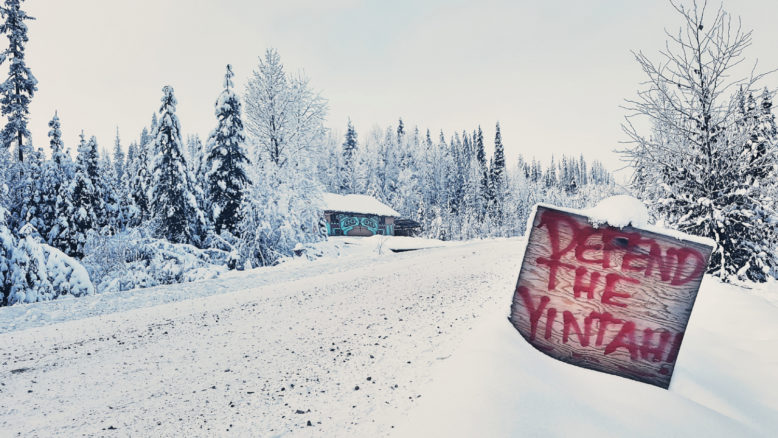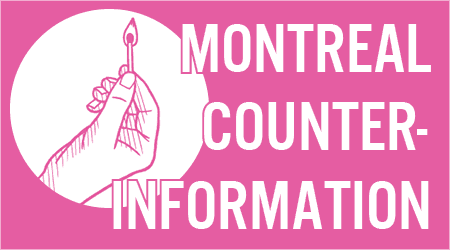
Anonymous submission to North Shore Counter-Info
See also: Nothing (Much) Changes: Analysis of Changes in Ownership of the Coastal Gas Link Pipeline
Where have you gone?
Last January there were so many of you. Of us!
In the streets. Shutting down bridges, ports, highways, railways, centres of capital, fuel terminals, and even storming TC Energy facilities. We were rushing office buildings, hanging banners, harassing politicians, police, courts and more. Informing, engaging, inciting. Undoubtedly meeting late into the nights, kept awake by our dreams. Strategizing. We were angry, passionate, strong, and determined. It was beautiful! Inspiring – hopeful!
What happened?
We’re not done – this is still happening! Force is not consent. The RCMP – the same commanders who argued for lethal oversight – are still in Wet’suwet’en territories harassing people. They’ve had the audacity to set up a temporary detachment in a place they don’t belong, aren’t welcome, and have no jurisdiction over.
Man camp 9A is already operating beyond Unist’ot’en and CGL is hoping to build another, bigger one nearby this spring. Some 100 industry people are currently living at 9A, and more get shuttled in daily with trucks, while others are brought by helicopters that pollute the area with particulates and noise.
CGL and subcontractors are actively destroying the land every day by clearcutting the pipeline right of way and blowing holes through mountains with explosives. The activity has stressed wildlife, pushing them into new areas and onto roads which now have increased human traffic.
None of it should be happening.
This land is unceded Indigenous land.
For anyone who’s been there, the yintah is easy to want to defend and easy to be inspired by.
You drink straight from glacial headwaters of the Skeena-Bulkley system, which are the breeding grounds for 30% of the salmon. Pines tower over you in the sky, collecting and shedding snow into the silence of winter days with soft wooshes as giant ravens tree hop. In August, glacial mountains remain snow-capped, the Wedzin Kwah runs ice cold and turquoise, and blooming magenta fireweed paints the land as bald eagles race the length of the river.
It’s very picturesque – and all of it is a necessity to maintain as-is for the Wet’suwet’en to survive and thrive there. Right now, in these very moments, we all have a chance to help make that a possibility. And people are asking for our help; they never stopped. We did.
Why?
If you stopped because you weren’t sure what camp to support – support them all.
If you’re confused about what’s being asked for;
- They need boots on the ground, especially long term boots (there is funding for Indigenous people to travel out there)
- Action in line with the natural laws and ally agreements in place for territories on which you would be acting (this is different from permission).
- The camps also have individual wish lists on their sites.
If you’re confused about where to start, start here:
- Cracks in the Pavement: an informational site that provides tips and tricks for action prep, actions, and security.
https://seedingresistance.noblogs.org/ - Another End of the World is Possible: an in depth guide that provides information of examples of resistance against extractive infrastructure.
- Weak Points of Canada’s Resource Extraction: a site that talks about natural infrastructure bottlenecks and opportunities
https://mtlcounterinfo.org/weak-points-of-canadas-resource-exploitation-economy/
The alternative to simply not trying (different than ability) is complicity. Many of us enjoy our lives and the privileges within them be it travel, advancing careers, going to class, or leisure time.
This is not a guilt-inducing argument for you to “give it all up for the rev” – it’s an argument for you to prioritize and treat this struggle as you do the other things in your life; jobs, careers, classes, socialization, adventures, and travel. It’s an argument to take this seriously because it is serious and we need to take ourselves seriously; this is people’s actual lives and cultures at risk. This is Indigenous sovereignty and healing. In those this struggle is anti-colonial. And it is also anti-capitalist and anti-state where there’s room for many people taking many actions.
Consider this a call to action.
Consider it a timely encouragement to start building networks and momentum capable of adaptation, risk-taking, and energy capture.
Get together with your crews and start talking:
What are the things that allow you each to take risk? How can you build them and put them in place? How can we incorporate more energy and capacity in our actions without compromising security? What security practises and cultures do we want to make sure are in place as we proceed? What has worked well – here or elsewhere? If elsewhere, can it appropriately translate here?
What is the state? What is it comprised of – physically and symbolically? What are the weak points –they exist! What are the other components and players in this struggle? If capital is driving the project, how do we inhibit either capital itself, or profit?
Sleep tight friends, and dream big. Another end is possible.


